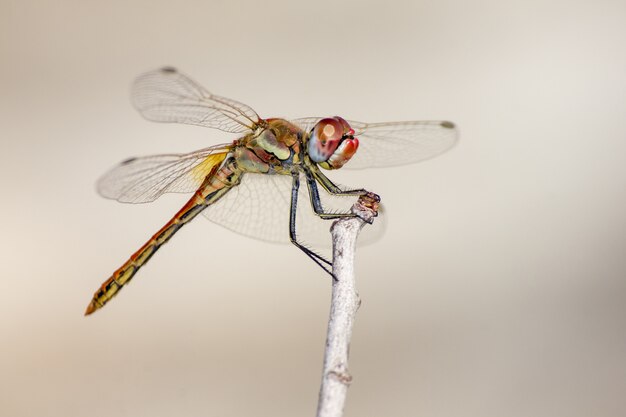Interesting Facts About Dragonflies

Dragonflies have been on Earth for over 300 million years.
The wingspan of a dragonfly can range from 2 to 5 inches.
Dragonflies are excellent flyers, capable of reaching speeds up to 30 miles per hour.
They can fly in any direction, including backwards and sideways.
Dragonflies have one of the highest insect-to-brain ratios.
They are known for their unique hunting technique, where they catch their prey mid-flight.
Dragonflies have incredible eyesight, with nearly 360-degree vision.
They have large, compound eyes composed of thousands of individual lenses.
Dragonflies are expert acrobats, capable of hovering and even flying upside down.
They are important predators, keeping mosquito populations in check.
Dragonflies are not harmful to humans and do not bite or sting.
Despite their name, dragonflies are not related to dragons.
The average lifespan of a dragonfly is about 6 months.
Dragonflies undergo a complete metamorphosis, starting as eggs, then becoming aquatic nymphs before transforming into adults.
They spend the majority of their lives in the water as nymphs, hunting small aquatic insects.
Dragonflies are excellent indicators of water quality since their presence indicates a healthy ecosystem.
Some dragonfly species are capable of migrating long distances, traveling thousands of miles.
Dragonflies are extremely territorial, defending their hunting grounds from other dragonflies and insects.
Interesting Facts About Dragonflies part 2
They communicate using a variety of methods, including body language and flashing colors.
Dragonflies have a body temperature that varies with their surroundings, which allows them to conserve energy.
There are over 5,000 species of dragonflies worldwide, with new species still being discovered.
The largest species of dragonfly is the Giant Darner, with a wingspan of up to 5 inches.
Dragonflies can see colors beyond what humans can perceive, including ultraviolet light.
Female dragonflies are generally larger and more vibrant than males.
Dragonflies are found on every continent except Antarctica.
Some dragonflies have been known to migrate in swarms, creating spectacular displays in the sky.
Dragonflies have been used as symbols of strength, change, and renewal in many cultures.
In Japanese culture, the dragonfly is seen as a symbol of courage and success.
Dragonflies are highly sensitive to environmental changes, making them important indicators of climate change.
Dragonflies have been used in scientific research to study flight mechanics and aerodynamics.
They belong to the insect order Odonata, which also includes damselflies.
Dragonflies have six legs, but they don’t use them for walking. Instead, they use their legs to catch prey while in flight.
Dragonflies have been observed engaging in complex courtship rituals before mating.
They have a unique feeding mechanism, using a hinged jaw to catch and crush their prey.
Dragonflies have an extraordinary lifespan compared to other insects of their size.
Dragonflies have been depicted in art and mythology throughout history, symbolizing various themes and concepts.
The wings of dragonflies are incredibly thin and delicate, yet remarkably strong.
Dragonflies are excellent navigators, often using visual landmarks and the position of the sun for orientation.
They are capable of regenerating damaged wings, allowing them to recover from injuries.
Dragonflies play an important role in the food chain, serving as both predator and prey for other animals.
Some dragonflies have iridescent wings, which shimmer and change color when hit by light.
Dragonflies are more active during the daytime, as they rely on warmth from the sun to regulate their body temperature.
They are capable of making short bursts of incredibly fast acceleration.
Dragonflies have been known to engage in cannibalism, with larger individuals preying on smaller ones.
Dragonflies have an intricate flight pattern, capable of darting, diving, and changing direction with precision and speed.